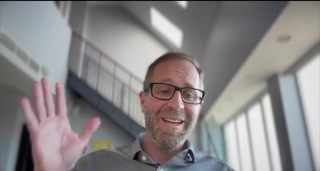
Spectroscopy Interviews
Latest News

Latest Videos

More News

Tobias Konz of Nestlé Research, Lausanne, Switzerland and various associates have developed and validated what they describe as a reliable, robust, and easy-to-implement quantitative method for multielemental analysis of low-volume samples. The ICP-MS-based method comprises the analysis of 20 elements (Mg, P, S, K, Ca, V, Cr, Mn, Fe, Co, Cu, Zn, Se, Br, Rb, Sr, Mo, I, Cs, and Ba) in 10 μL of serum and 12 elements (Mg, S, Mn, Fe, Co, Cu, Zn Se, Br, Rb, Mo, and Cs) in less than 250,000 cells, and involved the analysis of elemental profiles of serum and sorted immune T cells derived from naıv̈e and tumor-bearing mice. The results indicate a tumor systemic effect on the elemental profiles of both serum and T cells. Konz and his colleagues believe their approach highlights promising applications of multielemental analysis in precious samples such as rare cell populations or limited volumes of biofluids that could provide a deeper understanding of the essential role of elements as cofactors in biological and pathological processes. Konz spoke to us about this work.

Kay Sowoidnich, PhD, is a research associate with Laser Sensors Lab at the Ferdinand-Braun-Institut, Leibniz-Institut für Höchstfrequenztechnik and one of the 2020 winners of the Society for Applied Spectroscopy William F. Meggers Award. His group have been able to demonstrate the potential of shifted-excitation Raman difference spectroscopy (SERDS) as an efficient tool for soil nutrient analysis.

For more than 20 years, Heidi Goenaga-Infante, a science fellow and the leader of the inorganic analysis team at LGC, has been working on elemental and speciation analysis. Two recent areas of investigation include the analysis of trace metals in biological samples, and the study of nanomaterials. In these studies, Goenaga-Infante puts particular emphasis on metrology-advancing this work by developing validated reference methodologies. Goenaga-Infante is the 2020 recipient of the Lester W. Strock Award from Society of Applied Spectroscopy (SAS) and the SAS New England Regional Section, in recognition of her contributions to the field of analytical atomic spectrometry, and she recently spoke to us about her work. This interview is part of an ongoing series of interviews with the winners of awards that are presented at the SciX conference.

In 2009, a group of researchers conducted a study, using inductively coupled plasma–mass spectrometry (ICP-MS), to determine if heavy metal contaminants were present in a variety of pet foods . Results were compared to 2009 EPA Reference Dose (RfD) and World Health Organization (WHO) Tolerable Daily Intake (TDI) levels, scaled to the sizes of pets. In the intervening decade, the U.S. Food Safety Modernization Act (FMSA) was enacted, and pet food became one of the targets of scrutiny. The team conducted a follow-up study in 2019, revisiting the pet food brands first analyzed in 2009 as well as new brands that have emerged since, to see if anything changed significantly in the intervening decade. The new study used updated cryogenic and microwave technologies for sample preparation before ICP-MS analysis. We spoke to the study’s lead author, Patricia Atkins, a Senior Application Scientist at Spex CertiPrep, about this investigation.

In this interview, Dr. Claudia Conti, a senior researcher at the Institute of Heritage Science (ISPC) of the Italian National Research Council (CNR), talks about her work in micro-SORS. Conti is the winner of the 2020 Craver Award presented by the Coblentz Society, to be given at the 2020 SciX conference for her Raman research. The SciX conference is scheduled for October 11–16 in Sparks, Nevada. This interview is part of a series of interviews with winners of awards presented at SciX.

Working at the frontiers of biotechnology, fiberoptics, lasers technique and molecular spectroscopy, Tuan Vo-Dinh of Duke University has developed multiple sensor technologies useful for medical research and diagnostics. In this interview, he talks about his work in spectroscopy and photonics. Vo-Dinh is the winner of the 2019 Royal Society of Chemistry (UK) Sir George Stokes Award. He gave a plenary lecture at the 2020 SciX conference, in October in Sparks, Nevada. This interview is part of an ongoing series with the winners of awards that are presented at SciX.

Overall, the application of Raman spectroscopy has yielded greater understanding of multiple biomedical problems. We interviewed Prof. Yuki Ozaki, professor emeritus and a university fellow at Kwansei Gakuin University in Japan, about his work in this field. Ozaki is the winner of the 2020 Charles Mann Award for Applied Raman Spectroscopy to be given at the 2020 SciX conference for his Raman work in biomedical applications. This interview is part of a series of interviews with winners of awards presented at SciX.

Mary Kate Donais of Saint Anselm College, in Manchester, New Hampshire, uses mobile instruments in analytical archaeometry studies, and has conducted a recent study on the spectroscopic characterization of historic fabrics from a turn-of-the-19th century New England mill belonging to the Amoskeag Manufacturing Company, also in Manchester, and one of the largest textile producers in the world at its prime. We recently spoke to Donais about this work.

The ultimate goal of X-ray diffraction (XRD) profile modeling is to interpret XRD patterns measured from real samples. David Bish of Indiana University explores ways to streamline and accelerate the process with a new matrix methodology.

Recently, we spoke to Scott M. Auerbach a professor of chemistry and chemical engineering at the University of Massachusetts Amherst, about his work in the use of Raman spectroscopy for zeolite structure characterization, which has focused on a collection of nine all-silica zeolites.

Solid-state silicon nitride (SiNx) nanopore sensors can be used to analyze natural and synthetic oligosaccharides and polysaccharides like the anticoagulant drug heparin. These sensors are providing an understanding of nanopore electrokinetics-mechanisms important for capillary electrophoresis with often outsized importance on the nanoscale. Recent work in the use of nanopores is providing a platform for the development of new assays applicable to clinical analysis for a variety of therapeutic molecules. Nanopore sensors can be combined with spectroscopic techniques for multiple analytical applications. Recently, we spoke to Jason R. Dwyer, of the University of Rhode Island (USA) and a FACSS Innovation Award winner from the 2019 SciX conference, regarding his work in this field. This interview is part of a series of interviews with the winners of awards that are presented at the SciX conference.

Xiaoyun (Shawn) Chen of Dow Chemical solves a range of analytical problems in R&D and production processes using in situ spectroscopy and chemometrics.

Ping-Heng Tan of the Chinese Academy of Sciences is advancing the use of Raman spectroscopy to characterize graphene-based materials.

Nancy Pleshko of Temple University is studying the use of FT-IR imaging and NIR spectroscopy to solve bioengineering problems related to human replacement tissue.

This interview with Jake Shelley, the 2020 winner of the Emerging Leader in Atomic Spectroscopy award, describes his work on the underlying science behind desorption and ionization phenomena, as well as the issues associated with sample matrix effects inherent for plasma-based mass spectrometry.

By pursuing research focusing on a fundamental understanding of the physics and chemistry underlying ambient desorption/ionization–mass spectrometry (ADI-MS), Jake Shelley, the 2020 winner of the Emerging Leader in Atomic Spectroscopy award, has delved into the underlying science behind desorption and ionization phenomena as well as the issues associated with sample matrix effects inherent for plasma-based mass spectrometry.

Background correction is a critical part of any spectrometric analysis, but how much can you trust it? In this ebook, learn about traditional correction methods as well as a better way for background correction.

X-ray diffraction (XRD) techniques are often used to understand the nature of stacking of layers that form clay nanocrystals. But there are problems with these techniques that make applications difficult and often ambiguous. Dr. David Bish, Professor Emeritus at Indiana University (Bloomington, Indiana), and former students Dr. Hongji Yuan and Dr. Alberto Leonardi have been exploring ways to streamline and accelerate the process with a new matrix methodology as well as gaining more accurate results through the use of simulated profiles based on very large-scale atomistic models. We spoke to Dr. Bish about his group’s work in these areas and what these improvements can mean for the future of XRD modeling.

Christy L. Haynes, of the University of Minnesota (Minneapolis and Saint Paul, Minnesota), has been working with her research team to explore the use of a rapid and facile technique to empirically screen affinity agents of diverse compositions for all manner of targets. Here, she describes the advantages of using isothermal titration calorimetry (ITC) for screening of polymer affinity agents for use with surface-enhanced Raman scattering (SERS).

By combining Raman spectroscopy, imaging, and chemometrics, Ishan Barman of Johns Hopkins University, the 2019 winner of the Emerging Leader in Spectroscopy award, develops novel approaches in which structural and molecular data converge to provide fresh insights into cancer, diabetes and an array of other diseases.

SERS is a method that is receiving new attention in the detection, analysis, and identification of both natural and artificial food colorants. Lili He, at the University of Massachusetts, Amherst, recently spoke to Spectroscopy about this important analytical work.

Spectroscopy can be difficult to carry out outside a controlled laboratory environment. Imagine, then, the hurdles that would accompany performing spectroscopy in the extreme conditions of deep space or the ocean floor. Mike Angel, a professor of chemistry at the University of South Carolina, has taken on those challenges, working on new types of instruments for remote and in- situ laser spectroscopy, with a focus on deep-ocean, planetary, and homeland security applications of deep ultraviolet Raman, and laser-induced breakdown spectroscopy to develop the tools necessary to work within these extreme environments.

In biology and medical research in areas such as the study of insulin, achieving greater temporal resolution and lower detection limits is critical. Christopher Easley, of Auburn University, and the winner of 2019 American Electrophoresis Society (AES) Mid-Career Award, is working to address this challenge.

Raman spectroscopy has been demonstrated as an analytical technique for characterizing disorder in two-dimensional (2D) crystalline material structures caused by the presence of defects (1). This disorder in 2D crystalline structures may be described from a dimensionality point of view, zero-dimensional (0D), or one-dimensional (1D) defects, expressed as points or lines, respectively. For characterization of the quantity of 0D and 1D defects respectively, two Raman measurement parameters are required as defect-induced activation of forbidden Raman modes, and defect-induced confinement of phonons. Professor Ado Jorio, of the Department of Physics at the Universidade Federal de Minas Gerais in Brazil, recently talked to us about his research in this field.

Laser induced breakdown spectroscopy (LIBS) and time-resolved two-dimensional LIBS have been applied as quantitative and qualitative analytical methods for multiple materials and matrices, from animal tissue, to archeological ceramics, to dairy products, to zeolite composition. We were recently able to interview Professor Jorge O. Cáceres, the Director of the Laser Chemistry Group in the Department of Analytical Chemistry at the Universidad Complutense de Madrid, in Spain, who is working with LIBS for new method development. He recently spoke to us about his most recent LIBS research.











